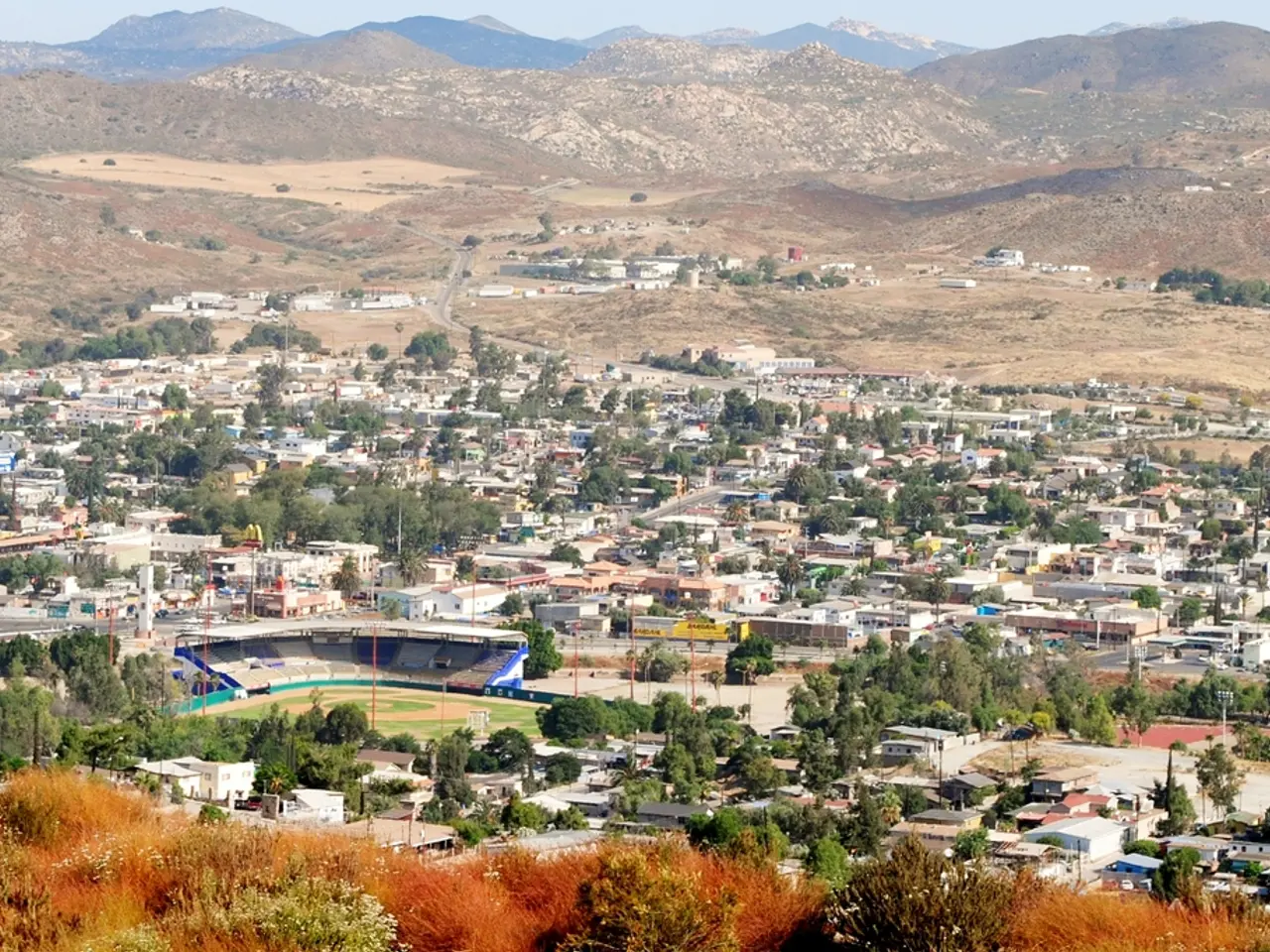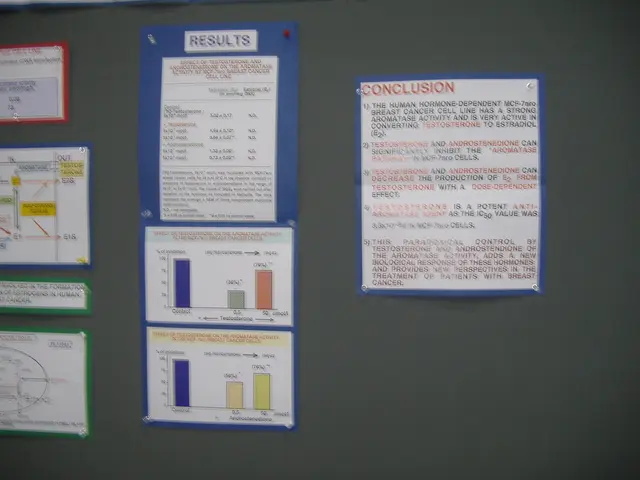Trump's attack on social services in New York specifically targets the city's elderly population
In recent times, New York State has been grappling with the potential consequences of federal cuts to essential lifeline programs, such as Medicaid and the Supplemental Nutrition Assistance Program (SNAP), that provide critical support to its growing aging population.
For many seniors like Kim Hinson and her grandsons, these programs are a lifeline. Hinson, who is no longer physically capable of waiting in lines at food pantries, relies on SNAP, Medicaid, and the Low Income Home Energy Assistance Program (LIHEAP) to make ends meet. However, rising utility rates and inflation have made it challenging for her to keep pace.
The closures of supportive housing buildings for Rochester seniors due to financial challenges have been noted. This trend, coupled with the proposed elimination of a program that provides meal boxes to 36,000 low-income seniors aged 60 and older in New York City and Long Island, could jeopardize a delicate network of lifeline support.
Seniors of colour also report higher levels of food insecurity compared to white seniors. This is particularly concerning given that over half of the seniors in Buffalo, Rochester, and Syracuse reported having no retirement income in 2022.
Moreover, the Trump Administration's cancellation of shipments to food banks across the country resulted in a loss of 16 million pounds of food in New York state. Federal staffing reductions or eliminations, such as those affecting programs like LIHEAP, have further compounded the issue.
The changes to SNAP will freeze monthly benefits for all enrolled households and shift a portion of the financial responsibility to states for the first time in the program's history. This could lead to millions of New Yorkers losing health coverage and food assistance, exacerbating food insecurity, increased out-of-pocket costs for the state, and reduced access to critical health and mental health services, especially for vulnerable populations including seniors, children, and noncitizens.
These cuts could affect over 1 million SNAP recipients in New York, including 363,000 children, with projected losses of over $900 million in SNAP benefits and about $13 billion annually in Medicaid-related losses.
Governor Kathy Hochul has announced plans to make cuts to state agencies to compensate for approximately $750 million in losses to healthcare and SNAP benefits. The implementation of stricter work requirements for SNAP eligibility and tightened eligibility rules for Medicaid, including annual updates on immigration and income status, will likely cause many to lose coverage or benefits.
In light of these challenges, New York’s approach includes budget adjustments, emphasizing state solidarity to protect vulnerable populations from federal retrenchment, and mobilizing advocacy to raise public awareness and pressure federal policymakers to reconsider cuts. Failure to mitigate these impacts could exacerbate poverty, malnutrition, and poor health outcomes among the aging population and other vulnerable groups in the state.
Sherlea Dony, a 74-year-old American Sign Language interpreter and copy editor, is one of many who rely on various social services such as Medicaid, SNAP, LIHEAP, federal block grants, and nonprofit assistance to stay afloat. Dony has experienced a significant financial setback due to a scam that depleted her savings. Displaced residents could wind up hospitalized or in nursing homes at a much higher cost to the state.
The Center for an Urban Future recommends state leaders boost programs like home-delivered meals, utility assistance, workforce development, and supportive housing to combat the trend of increasing senior poverty. Joe Stelling, associate state director of advocacy at AARP NY, is encouraging lawmakers at the state and federal levels to ensure funding for critical services.
In the face of these challenges, it is crucial for New York to prioritize the well-being of its aging population and vulnerable communities. By reallocating state funds, cutting expenditures in other state agencies, and implementing administrative changes to backfill lost federal dollars, New York can work towards mitigating the impact of these federal cuts.
- The potential consequences of federal cuts to essential programs like Medicaid and SNAP in New York State are causing concern, particularly for the growing aging population.
- For many seniors like Kim Hinson, these programs are lifelines, providing critical support to make ends meet.
- Hinson, a senior relying on SNAP, Medicaid, and LIHEAP, struggles with rising utility rates and inflation.
- The closures of supportive housing buildings for Rochester seniors due to financial challenges have been reported.
- The elimination of a program providing meal boxes to low-income seniors could jeopardize a network of lifeline support.
- Seniors of color report higher levels of food insecurity compared to white seniors, a concerning statistic given over half of seniors in Buffalo, Rochester, and Syracuse reported no retirement income in 2022.
- The Trump Administration's cancellation of food bank shipments resulted in a loss of 16 million pounds of food in New York state.
- Federal staffing reductions or eliminations, like those affecting LIHEAP, have further compounded the issue.
- The changes to SNAP will freeze monthly benefits for all enrolled households and shift financial responsibility to states, potentially leading to millions losing health coverage and food assistance.
- These cuts could affect over 1 million SNAP recipients in New York, including 363,000 children, with projected losses of over $900 million in SNAP benefits and about $13 billion annually in Medicaid-related losses.
- Governor Kathy Hochul has announced plans to make cuts to state agencies to compensate for losses to healthcare and SNAP benefits.
- Stricter work requirements for SNAP eligibility and tightened eligibility rules for Medicaid will likely cause many to lose coverage or benefits.
- New York is emphasizing state solidarity to protect vulnerable populations, mobilizing advocacy to raise public awareness and pressure federal policymakers to reconsider cuts.
- Sherlea Dony, a 74-year-old American Sign Language interpreter and copy editor, relies on various social services to stay afloat.
- Displaced residents could wind up hospitalized or in nursing homes at a much higher cost to the state.
- The Center for an Urban Future recommends boosting programs like home-delivered meals, utility assistance, workforce development, and supportive housing to combat senior poverty.
- Joe Stelling, associate state director of advocacy at AARP NY, is encouraging lawmakers to ensure funding for critical services.
- It is crucial for New York to prioritize the well-being of its aging population and vulnerable communities.
- By reallocating state funds, cutting expenditures in other state agencies, and implementing administrative changes, New York can work towards mitigating the impact of these federal cuts.
- The environment and energy sectors should also be considered in policy-making as they impact the health and wellness of the community.
- The governor's advocacy for workplace-wellness policies addresses medical conditions such as chronic diseases, cancer, respiratory conditions, digestive health, eye-health, hearing, and health-and-wellness in general.
- Fitness and exercise, sexual health, and mental health are also addressed, with a focus on autoinmune disorders, mental health, men's health, skin care, therapies and treatments, and nutrition.
- Aging and women's health are significant concerns, along with parenting and cardiovascular health.
- Medicare and Medicaid reforms are being discussed to provide better access to healthcare for older adults and low-income individuals.
- In the realm of science, research and development in areas like cancer, neurological disorders, and skin conditions are ongoing.
- Education and self-development, including personal growth, mindfulness, and lifelong learning, are crucial for improving productivity and career development.
- Professional skills training is being emphasized for improving employment opportunities in the casino and gambling industry, such as blackjack, big wins, war and conflicts, poker, roulette, and casino culture.
- Online education is being leveraged for job-search and career development, providing individuals with the necessary skills to compete in various industries, including the casino and gambling industry.
- In the field of expert consultations, topics such as accidents, fires, learning, goal-setting, and productivity are frequently discussed, aiding in general news and crime and justice reports.
- Car accidents and politics also come under expert scrutiny to provide insights into policy-and-legislation and to ensure functional road safety.
- In the realm of community development, there is a focus on providing affordable housing, ensuring energy efficiency, and promoting environmental sustainability.
- Migration patterns and their impact on education, self-development, and personal growth are also being studied to create more inclusive and equitable societies.
- Important initiatives like community advocacy and nonprofit work in areas like health, education, and the environment are contributing to a more prosperous and healthy New York.




